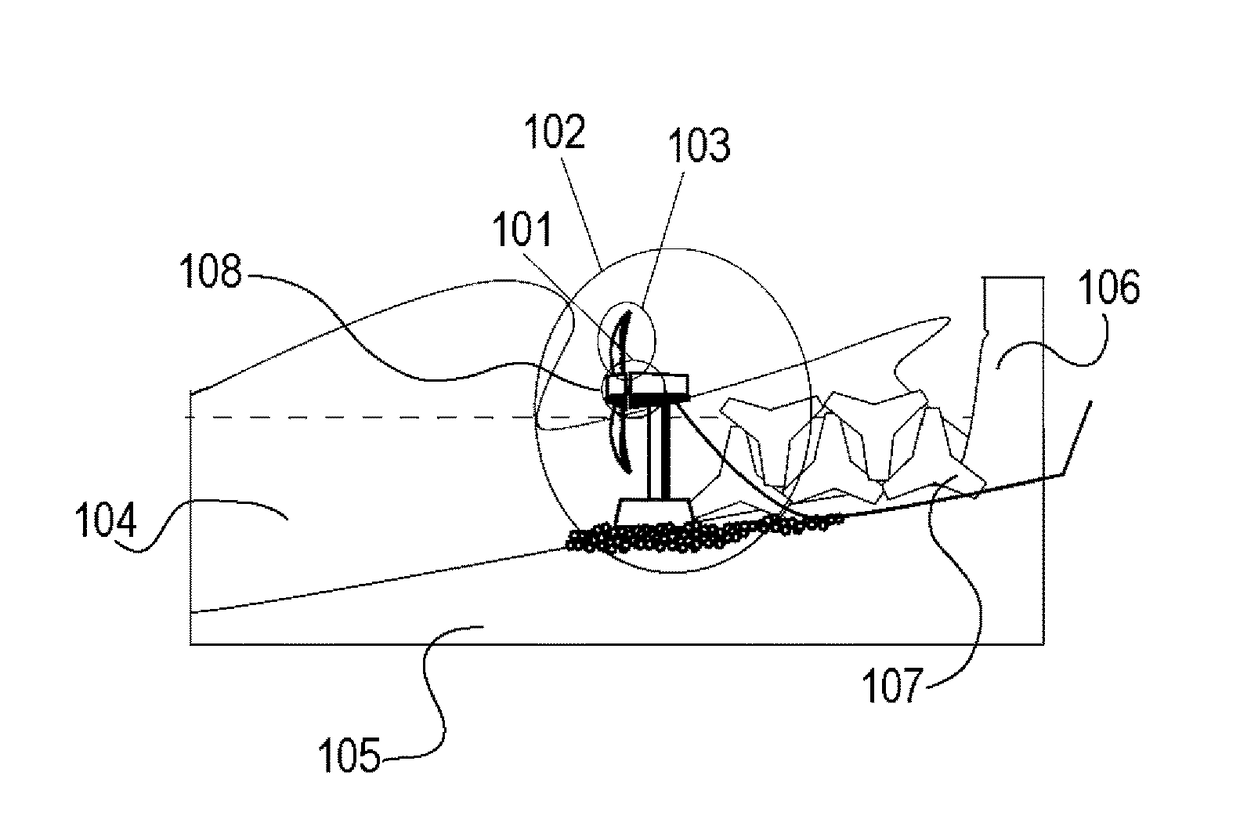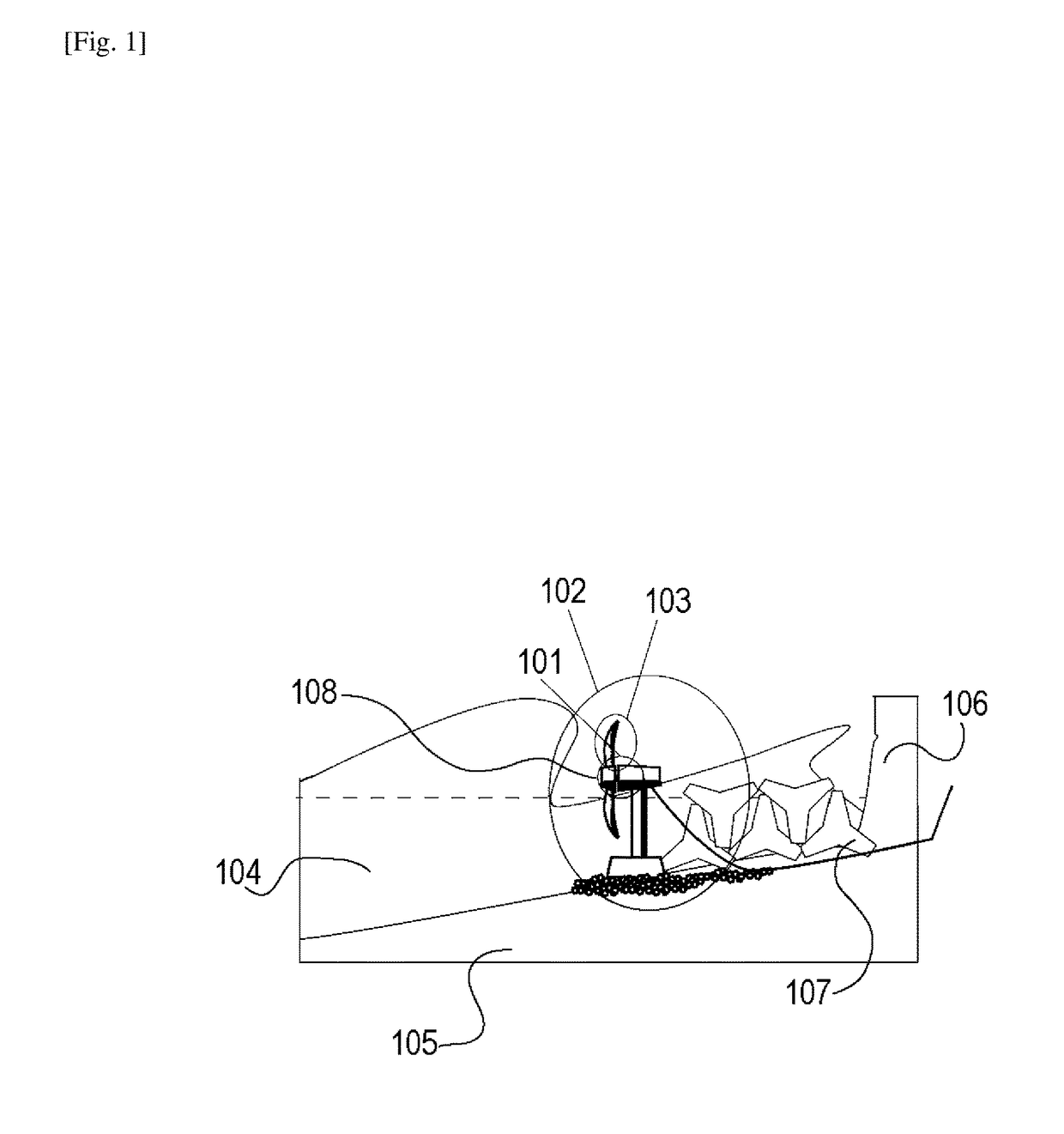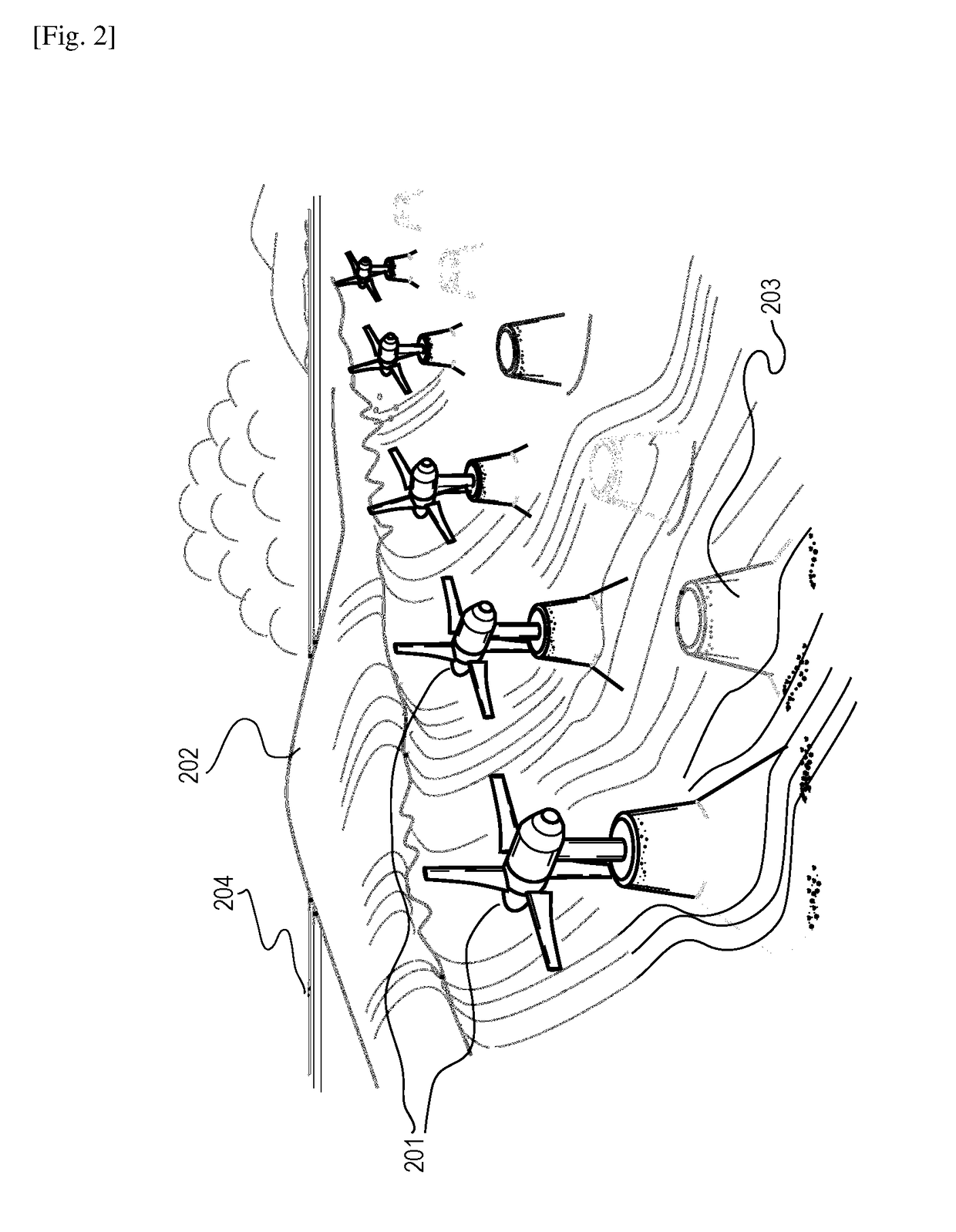Wave energy converter
a converter and wave energy technology, applied in the direction of engine working fluid, machine/engine, sea energy generation, etc., can solve the problems of low energy conversion efficiency, failure of most r & ds, and failure to meet economical requirements, so as to achieve easy maintenance, reduce installation costs, and efficient and economical
- Summary
- Abstract
- Description
- Claims
- Application Information
AI Technical Summary
Benefits of technology
Problems solved by technology
Method used
Image
Examples
Embodiment Construction
[0029]The present disclosure provides, in one aspect, a turbine with appropriately designed rotatable blades for Wave Energy Converter (WEC) to harness ocean energy to convert into electricity from flows of water in the onshore breaking waves. In some embodiments, a plurality of such turbines are installed near the shore so that forward and backward flows of the coastal waves near the coast line cause the rotations of the blades, thereby constituting a wave energy converter system that generates electricity. The ocean waves are normally mixed with vortex flows and air bubbles. Thus, the turbine has to run inside highly non-uniform multi-phase flows. When the ocean wave approaches to a shore, forward motion of wave crest becomes dominant. Because the sea floor acts as a drag force, the wave crest runs faster than the bottom, starting to break. In at least some of the embodiments disclosed herein, this fast running water slope has been used for surfing; here the present disclosure use...
PUM
 Login to View More
Login to View More Abstract
Description
Claims
Application Information
 Login to View More
Login to View More - R&D
- Intellectual Property
- Life Sciences
- Materials
- Tech Scout
- Unparalleled Data Quality
- Higher Quality Content
- 60% Fewer Hallucinations
Browse by: Latest US Patents, China's latest patents, Technical Efficacy Thesaurus, Application Domain, Technology Topic, Popular Technical Reports.
© 2025 PatSnap. All rights reserved.Legal|Privacy policy|Modern Slavery Act Transparency Statement|Sitemap|About US| Contact US: help@patsnap.com



